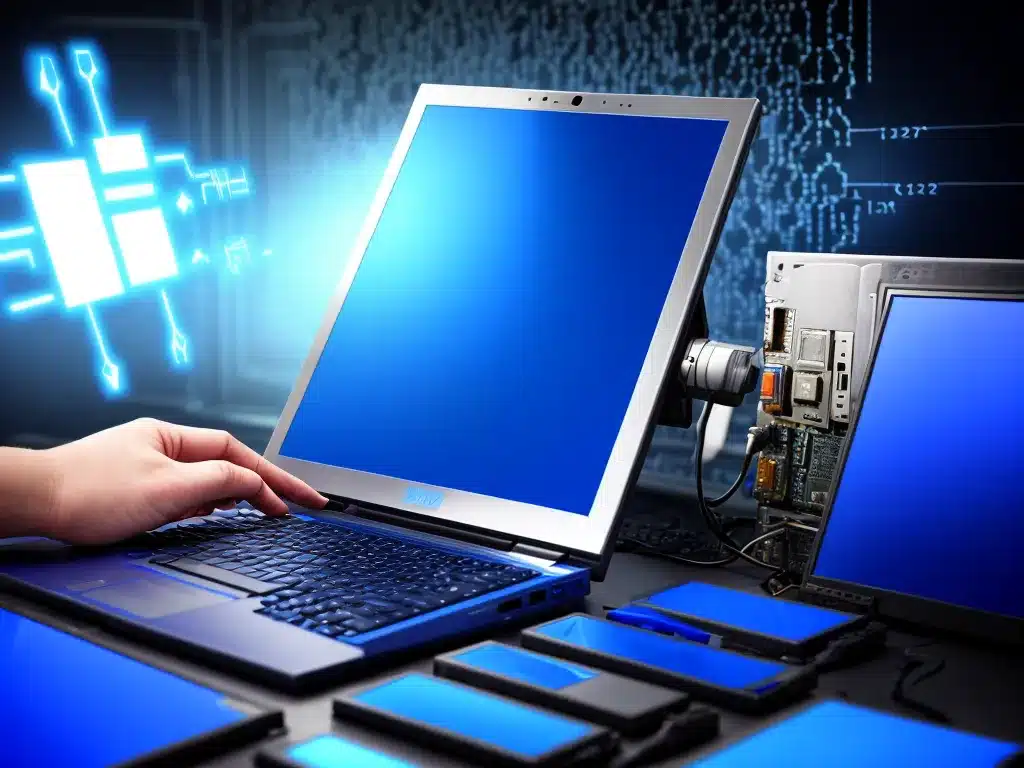
The dreaded Blue Screen of Death (BSOD) can be terrifying when it suddenly appears on your computer screen. However, while BSODs may seem catastrophic, they can usually be fixed with a few simple steps. In this article, I will provide an in-depth guide on troubleshooting and resolving the most common BSOD errors.
What Causes the Blue Screen of Death?
The Blue Screen of Death is caused when a critical system error or hardware failure occurs, causing your operating system (usually Windows) to crash or freeze. Some common causes include:
-
Faulty or outdated device drivers – Device drivers act as a translator between your hardware and operating system. Outdated or buggy drivers are a leading cause of BSODs.
-
RAM issues – Faulty RAM sticks or RAM that becomes unstable can lead to critical system errors.
-
Hardware failure – Severe issues like a failed hard drive or defective CPU can prevent your system from booting properly.
-
Power supply issues – An inadequate or failing PSU can cause crashes and BSODs during intensive operations.
-
Overheating – Excess heat can cause system instability and critical hardware errors.
-
Malware or virus infection – Malicious programs can sometimes modify or corrupt system files resulting in BSODs.
-
Software conflicts – Incompatible or buggy software programs can clash with system processes and cause a crash.
Decoding the BSOD Error Code
When a BSOD occurs, an error name and hexadecimal stop code are displayed on the blue screen. This code indicates what type of critical error occurred.
Some examples of common BSOD stop error codes include:
-
STOP 0x0000007B– Indicates an issue with your boot drive, often caused by a corrupt boot sector. -
STOP 0x0000008E– Points to a problem with your computer’s memory (RAM). -
STOP 0x000000D1– Suggests a driver conflict or issue with a driver. -
STOP 0x000000F4– Commonly caused by a critical system process or thread failure. -
STOP 0x000000ED– Indicates a hardware malfunction, often caused by defective RAM.
Researching your specific BSOD stop code can help narrow down the root cause of the error.
Troubleshooting Steps for Blue Screen Errors
Here are some general steps to take when diagnosing and resolving a Blue Screen of Death:
1. Identify any recent changes made to your system
Think about what software you may have installed, updates that occurred, or hardware changes right before the BSODs began appearing. Reversing these changes may fix the issue.
2. Check your system memory (RAM)
Use the Windows Memory Diagnostic tool to scan for RAM errors. Failing or incompatible memory modules can frequently cause BSODs.
3. Update device drivers
Outdated drivers account for many BSOD crashes. Update your motherboard, video card, and other device drivers to the latest available versions.
4. Check for overheating issues
Download a system monitoring tool like Speccy to check your CPU and system temperatures. Overheating can result in BSODs. Make sure your fans are working properly and components are dust-free.
5. Test your computer’s hardware
Run diagnostics tools offered by your computer or component manufacturers to check for failures with your RAM, hard drive, CPU, motherboard, and other hardware.
6. Check for malware and viruses
Run a full system antivirus scan. Hidden malware is capable of corrupting system files in a way that causes BSODs.
7. Attempt Safe Mode and system restore
Boot into Windows Safe Mode to see if the BSOD persists when running minimal drivers and services. A System Restore to an earlier restore point may also resolve software-related BSODs.
8. Analyze crash dump files
The crash dump files created after a BSOD can provide detailed information on the error. Analyzing these with Debugging Tools for Windows may identify the faulty driver or process responsible.
Preventing Future Blue Screen of Death Errors
Here are some tips to help prevent frequent BSOD crashes:
-
Keep your operating system, drivers, and programs up-to-date with the latest patches.
-
Only install software and drivers from reputable sources.
-
Regularly backup important data as a precaution.
-
Monitor your system temperatures to avoid overheating.
-
Use quality RAM from reputable brands for maximum stability.
-
Ensure your power supply can provide clean and stable power delivery during peak loads.
-
Avoid overclocking components beyond manufacturer recommendations.
While the occasional BSOD is unavoidable, following these troubleshooting steps and preventive tips should help minimize Blue Screens of Death going forward. With some diligence, you can resolve the underlying issues and get your PC running smoothly again.












